The year was 1977. President Carter had just been inaugurated, Porsche released the venerable 928, The Clash dropped their first album, and James Bond played cat and mouse with the KGB in The Spy Who Loved Me. This was the height of the Cold War with the portent of nuclear doom hanging over the world like the Sword of Damocles. Soviets and Americans competed for dominance in everything from the build up of arms to space travel and Olympic sports. This point and counter point between the mega powers even played into automotive history. In America, Jeep was earning loyal fans with the now revered CJ-5 and as 1977 came to a close, the Soviets unveiled their own off road vehicle, the unimposing, decidedly quirky, and shockingly capable, Lada Niva.
The Lada Niva is unlike any of the off road vehicles of its generation. The Jeep CJ-5, Land Rover Series I, and other such offerings were all direct derivatives of proven military trucks, complete with the requisite brawn their owners demanded. In the United States, the CJ-5 was marketed with all the flare of a pure recreational vehicle. Jeep adverts of the era depicted hansom young drivers in mirrored sunglasses with even shinier smiles. The Toyota FJ40 of this vintage appeared as if it was designed specifically to evoke the drama of a day on Safari. By contrast, the plucky Lada Niva looked as if it was purpose built to navigate the parking lots of sorority row. Like a VW Rabbit with swollen feet, the Lada Niva was, and still is, a curiosity of the automotive world. It does’t seem to represent the might of the USSR, or appear tough enough to suffer even a few whacks of a sickle and hammer. It does however look right at home trundling down the unkept farm roads of Russia, and for good reason. The word Niva roughly translates to “crop field.” Russia circa 1977 was not prone to safari, and recreation didn’t rank high on the list of priorities as established by The Party. The Lada Niva was built as a service car for the rural farm worker. If the CJ-5 frequently hauled coeds and beer coolers, the Niva did as much time transporting sallow faced babushkas with crates of produce. This was a working class automobile.
The Niva concept originally began in 1970 by way of curious fate. That summer, First Deputy Chairman Alexei Kosygin arrived at the AvtoVAZ auto facility to investigate the disappearance of millions of Rubles. While chatting with VAZ designers, Kosygin expressed a need for the development of a country car. At the time, such a car was in preliminary design stages, but largely built around the Fiat Kompanolu which was being used in Italy by the Carabinieri and military. With Kosygin’s council, it was eventually decided the Fiat was out and an entirely new car would be built from the ground up––almost. Pulling from previous platforms and parts packages, the Lada Niva began to take shape as the rugged mini-SUV as we know it today.
The Lada Niva was officially named the VAZ 2121 and production commenced in 1977 in the Togliatti AvtoVAZ factory. Named after an Italian Communist leader, the Togliatti AvtoVAZ factory was the largest automotive factory in the world. With more than 180 miles of assembly line under a single roof sprawling for a square mile, the little Niva was built on a massive scale as was often the case during pre-detente years. The Niva immediately went to hard work across Russia and it performed perfectly.
Like many of the mysteries from behind the Iron Curtain, the Lada Niva is complicated, cryptic, and not at all what it seems. Take for example the name. Lada, like any good alias, was contrived and not really the name of the manufacturer at all. Even the Viking ship logo seems to elicit a different identity. The name Lada was chosen because it translated well to most languages, didn’t carry with it any gender bias, and could be spelled in Cyrillic and Latin alphabets. Personally, I think it sounds like a designer cosmetic. “Lada Niva exfoliates while it moisturizes.” At any rate, it is a catchier handle than VAZ 2121.
The Niva, as unassuming as it appeared, was also a very innovative design. It was one of the first mass produced vehicles to feature a unibody architecture. It had an independent front suspension with coil springs. The 1.6 liter engine had overhead cams and could produce a reliable 72 hp. How that power was delivered to the ground is what made the Niva so special. Front, center and rear differentials provided the Niva with 4×4 traction augmented with a center locking differential and a low range transfer case. Now getting to the beat fields was no problem at all. If the Niva was innovative, it was certainly not elegant. Amenities were minimal and comfort equal to the scratchy wool coats worn by most Niva drivers. Austere as it was, it was reliable, durable, and in the backwoods of Russia, what more could anyone want?
Because of its diffident shape and diminutive stature, it’s easy to dismiss the Lada Niva as a cute entry into the world of real off road trucks, but don’t be fooled. The Lada Niva is not just capable, it’s well proven. Even prior to production, a prototype Niva went for a test run starting at the Kremling, where it was inspected by Party officials, and ended up on the far eastern reaches of Central Asia. To test the suspension, Niva testers would often crisscross the Pamir and Ural Mountains. The Niva might be one of the more traveled platforms in overlanding. I dare say it has achieved a few accolades even Land Rover can’t claim.
Although it’s oft the subject bar stool debates, many regard the Lada Niva as the first vehicle to drive to the North Pole. Toyota loyalists will assert this is blasphemy and award that victory to Jeremy Clarkson and his Arctic Trucks modified Toyota Helix. If you’re apt to defend the spunky little Niva, you’ll site 1998 as the year, and Niva the winner. The images from that excursion border on hilarious. Fitted with enormous tires, the Niva looks like a giant roller skate.
The Niva also held the record for the highest vehicle attained altitude. In 1999, three Lada Nivas drove to an altitude of 18,786 feet in the high plateaus of Tibet. That record held until 2005 when that honor transferred to the VW Touareg. Outside the record books, the Lada Niva has carried thousands of intrepid overlanders to destinations seemingly well beyond the reach of such an innocuous little car. In Europe the Niva can still be purchased as a new automobile and then modified just as any other platform. Lifted and snorkeled, the Niva is a formidable vehicle and tough as a two dollar steak. Reports of Nivas starting in temps as low as -50º C are not unheard of. Nivas submerged in bogs have been put back into service between lunch and dinnger. These are tough little cars. As such, throngs of fans have adopted the Niva as their favorite off road vehicle including unusual owners like Vladimir Putin, who’s camo-clad Niva is said to be one of his favorite play things.
And this brings us to the sad ending to this tale of the ugly duckling that we call the Lada Niva. Love it all you want in the United States, chances are you’ll never have one. The Lada Niva is as rare as Russian hen’s teeth in the States. While they may pop up on eBay every once in a blue moon, few are worthy of purchase. In searching for a number as to how many Lada Nivas are for sale right now, I did stumble across another option, MiG fighter jets. There seems to be dozens of those available. Go figure.
This feature first appeared in the Winter 2013 issue of Overland Journal


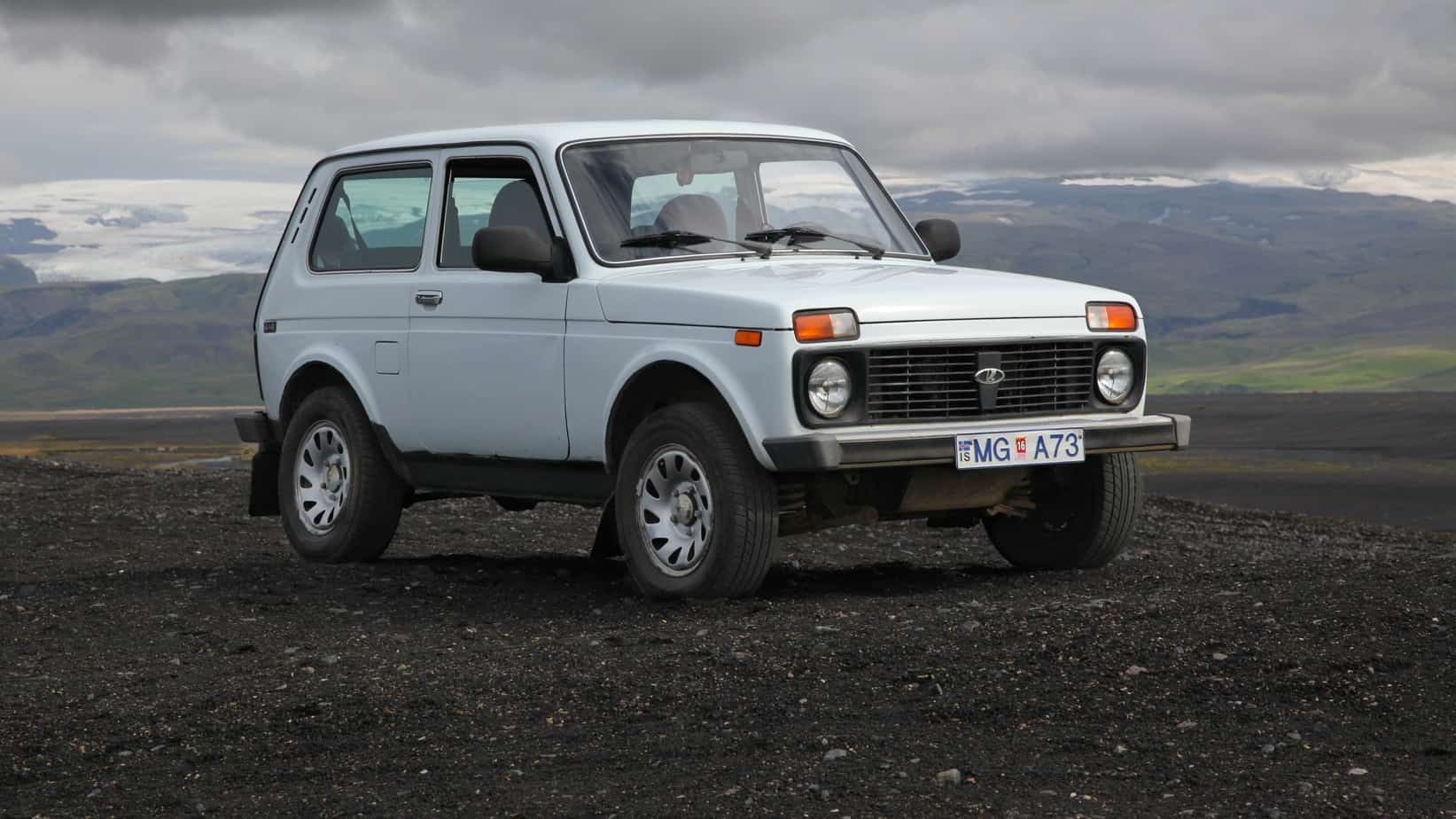
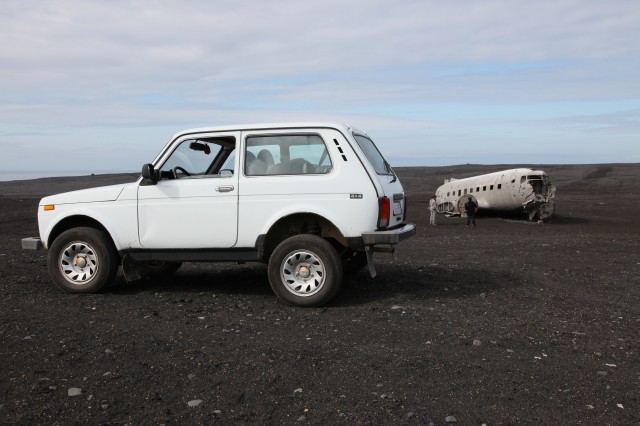

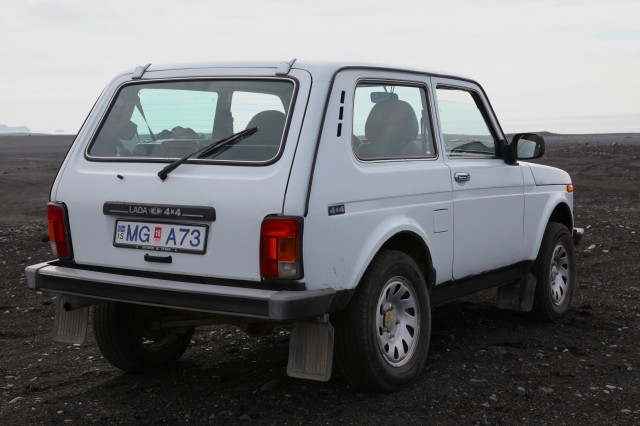
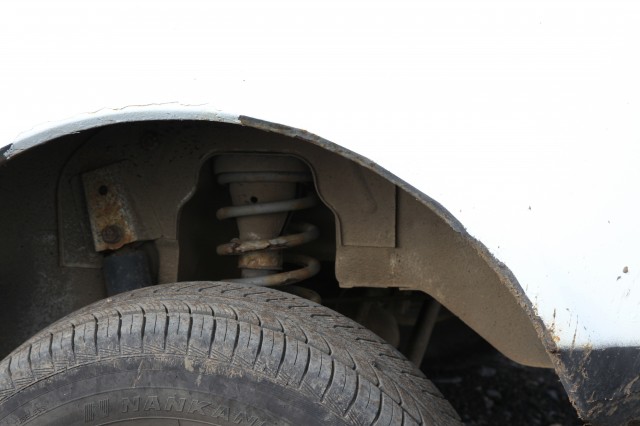
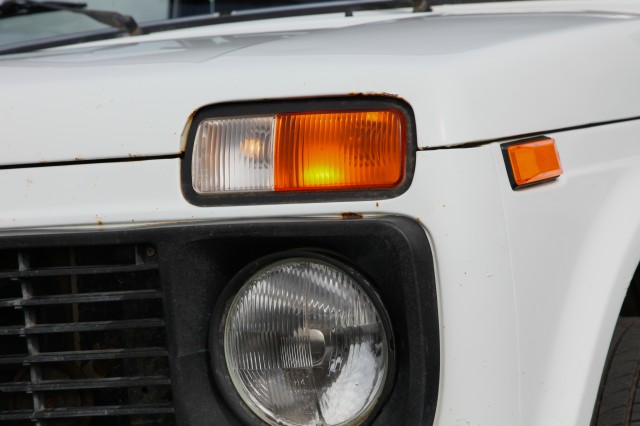
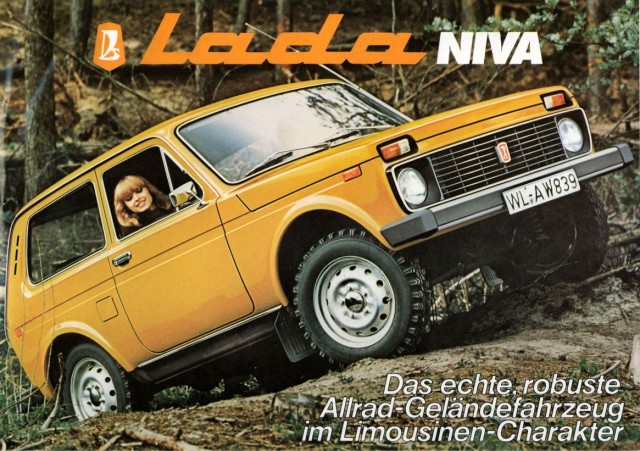
One Comment
John W
October 8th, 2018 at 6:31 pmI bought the newer Lada Niva 1.7i Cossack in 1996 which was the 1.7 litre fuel injected mode, It would do 33 to 43 mpg and handled better than any other 4×4’s on the black top, Around town it was a little rocket and in the snow it was as good off road as WWII Jeep or a CJ5 when it came to traction and the fact is it was as good off road as anything you can buy today, A couple grips were the cable actuated clutch lever and adjusting the hand/park brake became a regular thing every month or so, The Wiper washer bottle was the best I have ever seen where it came factory fitted with a spare pump/motor already fitted so if one packed up all you had to do was plug the wires on to the spare motor which both were positioned on the top of the 4/5L bottle/tank in the engine bay, fantastic setup, the plastic bits inside were a little wanting but on the whole the Lada Niva 1.7 is/was every bit as good as a Land Rover Defender 90 is and with a lot more comfort and a heap less Noise and at todays prices it cost about $10,400 back in 1996 were as the Defender 90 was in excess of $18.200/$30,000. It was better to drive too, It would seat 5 Adults, the front buckets had that Recaro feel about them but the rear bench was good but did not have headrests not the most comfortable but it served it’s purpose like with most SUV/4×4’s. It was impressive and I only have fond memories of it and the first time I took it out in the Snow it was like Christmas, I could not believe how it performed in the Snow and Ice while Range Rovers were going badly Sideways the Lada Niva Tracked straight and True, In a word ? Incredible, I wish I still had it but the thing that I regret the most is selling it and 2)4×4 companies did/do not make enough modded parts for them as with all brands except Land Rover, Jeep and Toyota, These after market parts companies need to realize that there are more brands out there than these 3.